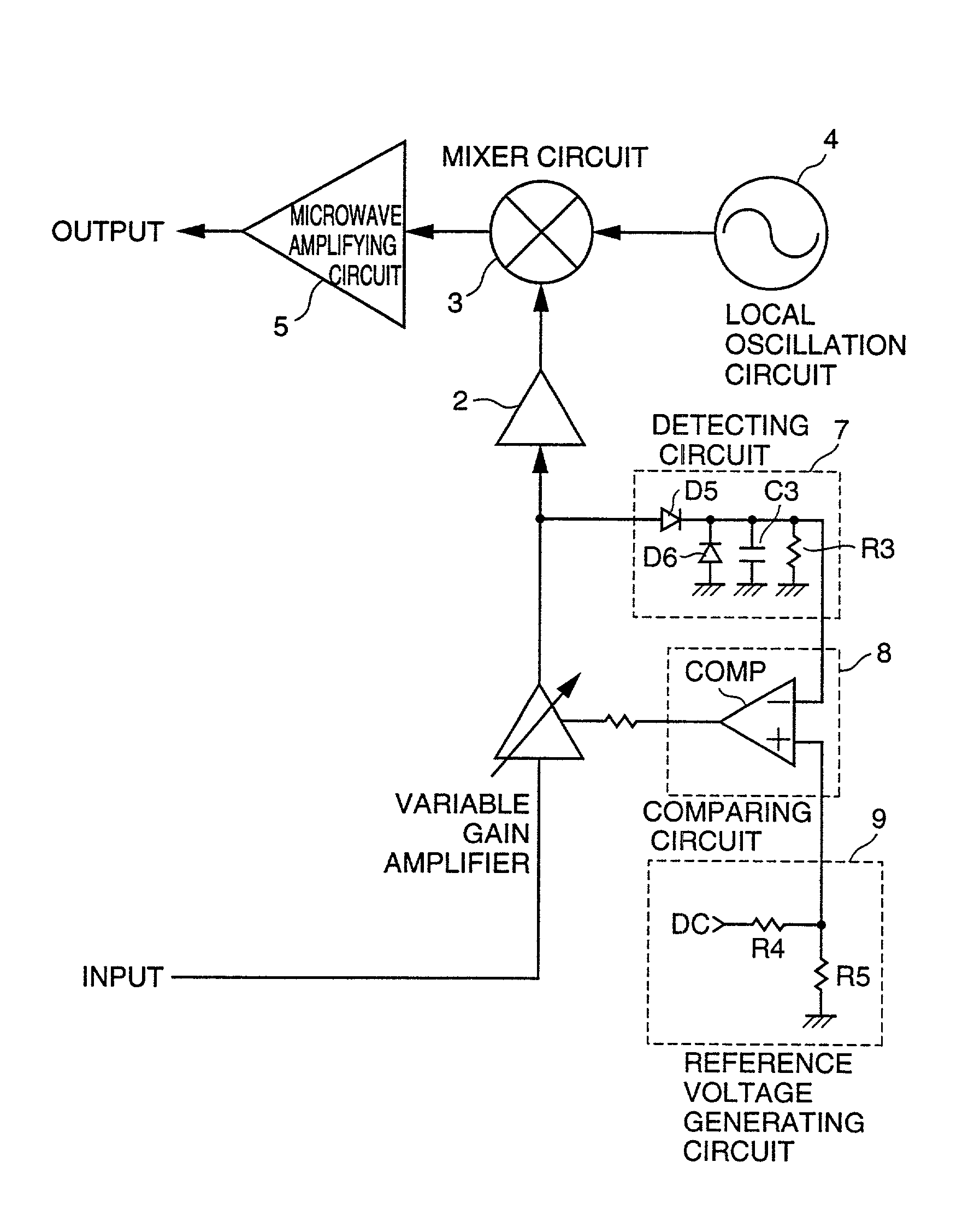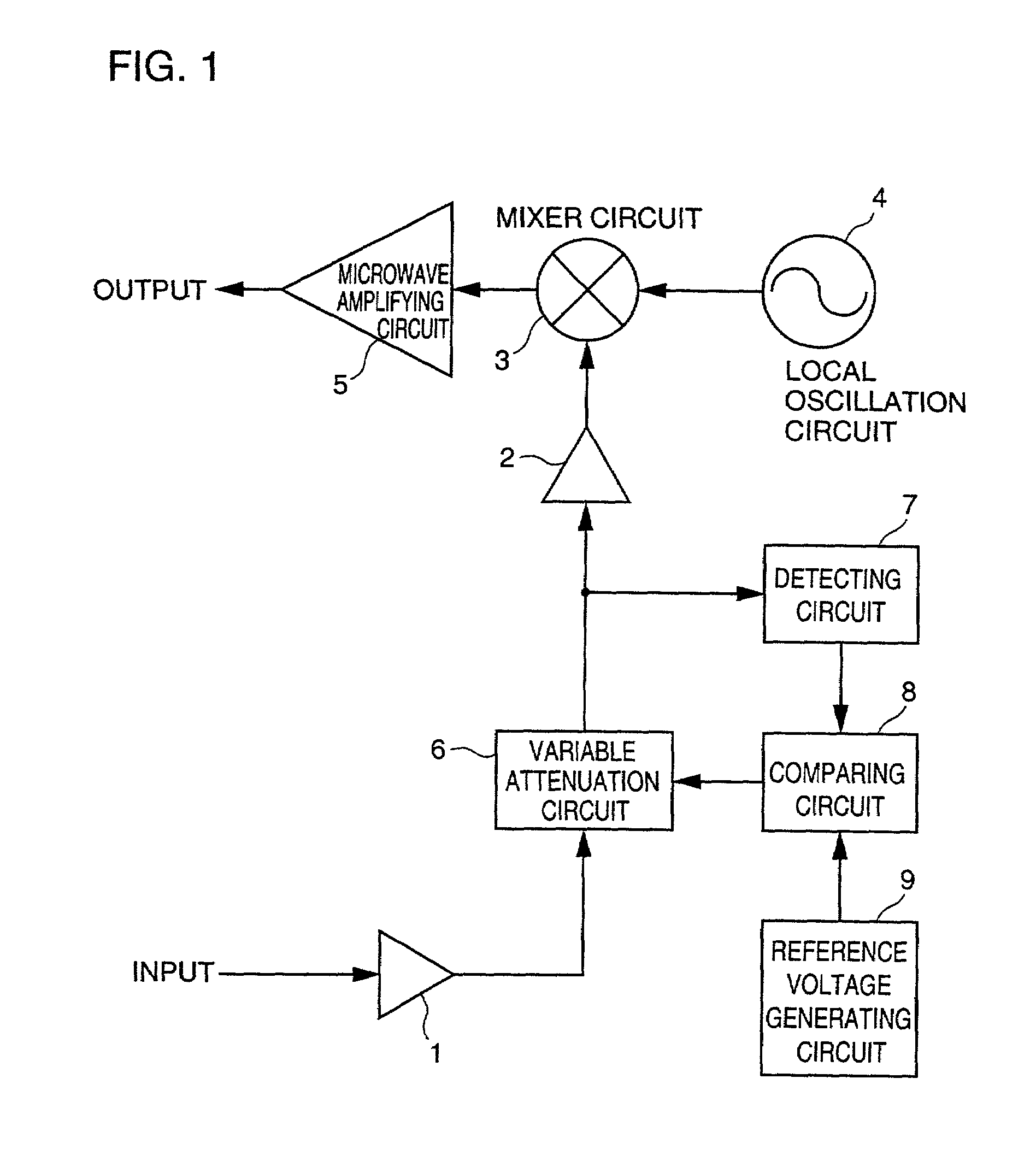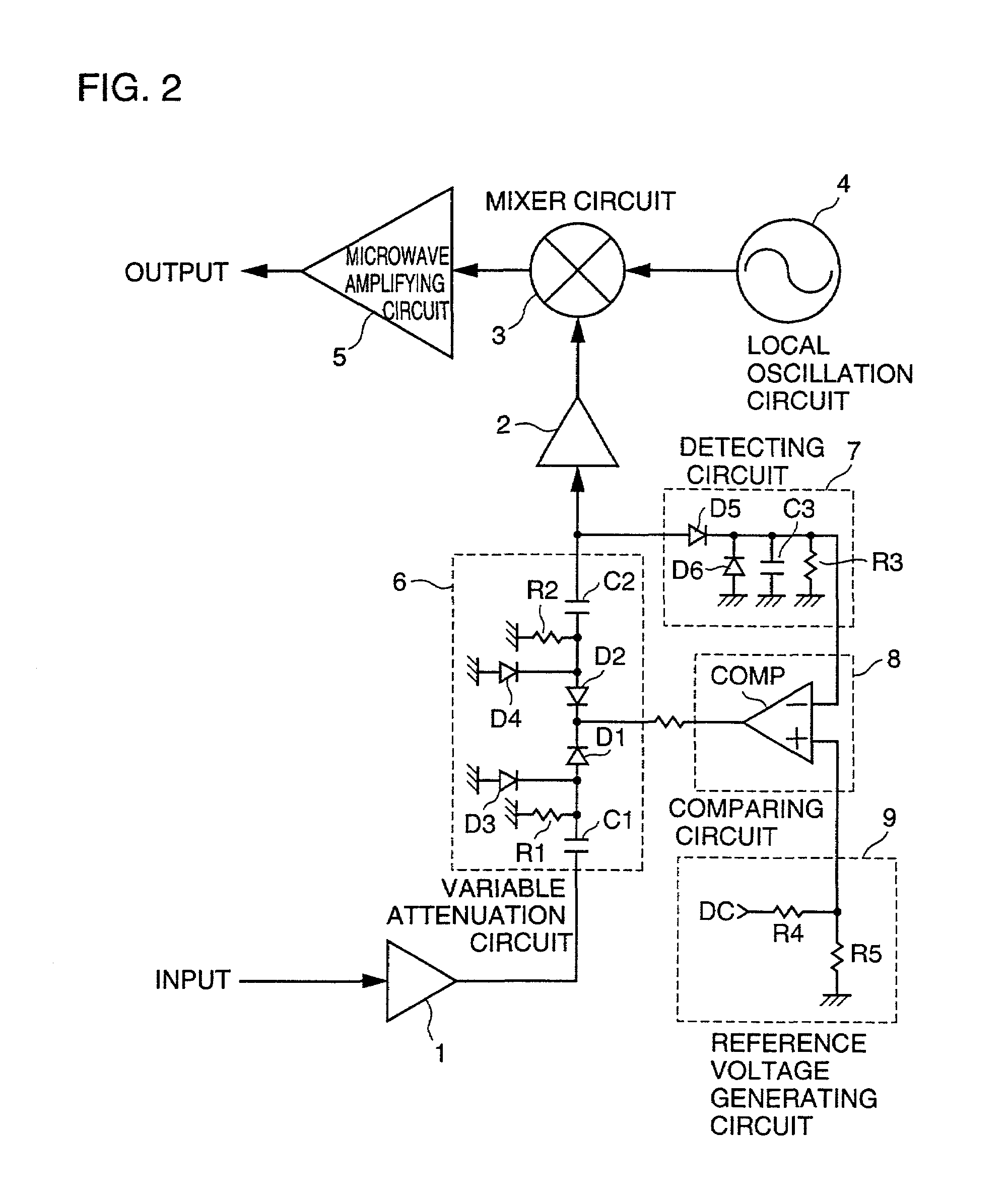Transmitter
a transmitter and input side technology, applied in the field of transmitters, can solve the problems of affecting the promotion of satellite multimedia applications, affecting the quality of transmission, and the impedance of input and output side variations, so as to facilitate the adjustment of output levels and suppress the effect of impedance variations
- Summary
- Abstract
- Description
- Claims
- Application Information
AI Technical Summary
Benefits of technology
Problems solved by technology
Method used
Image
Examples
Embodiment Construction
[0031]FIG. 1 is a block diagram of the transmitter in accordance with one embodiment of the present invention. Referring to FIG. 1, an input signal is applied from an indoor unit 20 shown in FIG. 7 through a coaxial cable 21, which has an intermediate frequency signal superposed on a DC voltage. The DC voltage is supplied to a power supply circuit, not shown, only the intermediate frequency signal is applied to and amplified by an amplifier 1 to ensure a prescribed gain, and thereafter it is applied to variable attenuation circuit 6. Variable attenuation circuit 6 changes the amount of level attenuation of the intermediate frequency signal, by a signal from a feedback loop including detecting circuit 7, comparing circuit 8 and reference voltage generating circuit 9.
[0032]The output of variable attenuation circuit 6 is applied to an amplifier 2 as well as to a detecting circuit 7. Detecting circuit 7 rectifies the intermediate frequency signal, converts to a DC voltage and applies th...
PUM
 Login to View More
Login to View More Abstract
Description
Claims
Application Information
 Login to View More
Login to View More - R&D
- Intellectual Property
- Life Sciences
- Materials
- Tech Scout
- Unparalleled Data Quality
- Higher Quality Content
- 60% Fewer Hallucinations
Browse by: Latest US Patents, China's latest patents, Technical Efficacy Thesaurus, Application Domain, Technology Topic, Popular Technical Reports.
© 2025 PatSnap. All rights reserved.Legal|Privacy policy|Modern Slavery Act Transparency Statement|Sitemap|About US| Contact US: help@patsnap.com



